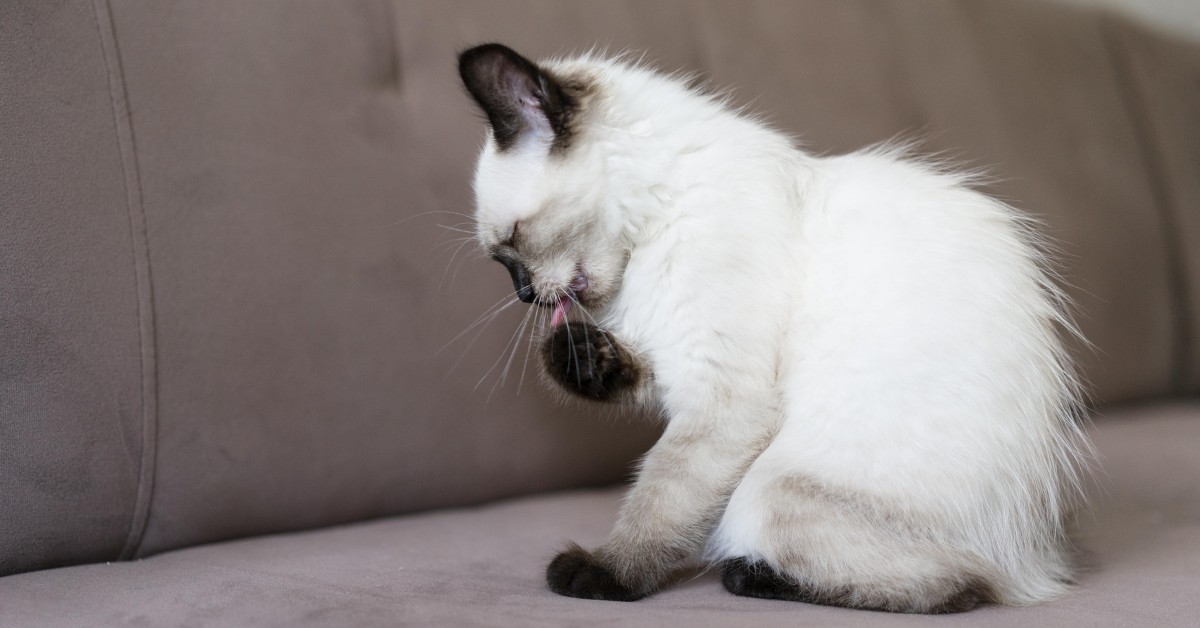Grain-Free Pet Foods: Are They Right for Your Pet?
Compare the benefits and risks of grain-free and grain-inclusive pet foods to help you make the best diet choice for your pet.
You think of your pet as part of the family. Therefore, it makes sense that you want the best for their health. When it comes to good nutrition, it can be tough to choose the right foods for healthy growth and development. One of the most important choices you’ll need to make as a pet owner is whether to feed your pet grain-free dog food or cat food - or to stick with a grain-inclusive diet. Let’s look at the key benefits, potential risks, and differences between these food types.
What’s the Difference Between Grain-Free Pet Foods and Grain-Inclusive Pet Foods?
Grain-free pet foods are formulated without any grains, such as corn, wheat, barley, soy, and oats. Instead, these foods rely on alternative carbohydrate sources to provide nutrients and energy. Common ingredients found in grain-free pet foods include lentils, peas, sweet potatoes, fruits, and protein sources like fish, poultry, and meat.
Grain-inclusive pet foods are those that contain grains as part of the formula. These grains provide pets with essential nutrients needed for energy, along with other ingredients such as meat, vegetables, and fruits. Common grains found in grain-inclusive foods include barley, rice, corn, and oats.
Benefits of Grain-Free Dog Food and Cat Food
While grain-free pet foods are not suitable for all pets, they can offer some key advantages, including:
Reduced Allergies and Sensitivities
Grain-free diets are often recommended for pets with certain allergies or sensitivities. Pet food allergies are relatively common in cats and dogs and can trigger adverse reactions such as itching, gastrointestinal upset, and ear infections. Eliminating grains from your pet’s diet can reduce the likelihood of allergic reactions and improve your pet’s quality of life.
Improved Digestibility
Some pets have sensitive digestive systems that can highly benefit from a grain-free diet. Grain-free diets generally use alternative carbohydrates which can be easier for pets to digest. The absence of grains can also mean fewer irritants, leading to reduced gastrointestinal discomfort and improved stool consistency.
High Protein and Low Carbohydrate Content
A common trend you’ll find in grain-free pet foods is high levels of protein and low levels of carbohydrates compared to grain-inclusive options. Greater amounts of protein in the diet can improve muscle development, prevent obesity, and support overall health.
Use of Natural Ingredients
Many pet owners are moving away from commercial pet foods in favor of pet diets that use natural ingredients. Good pet food nutrition focuses on incorporating a variety of meats, fruits, and vegetables into your pet’s diet and avoiding highly processed foods that often lack essential nutrients. The use of high-quality, natural ingredients can lead to improved coat condition, immune function, and overall elevated well-being.
Benefits of Grain-Inclusive Diets
Grain-inclusive diets are favored by many pet owners due to their array of benefits. They offer pets essential nutrients that give animals the energy they need to remain active and healthy. They also offer other key benefits, including the following:
Balanced Nutrition
By including grains packed full of essential nutrients, pet owners can provide their cat or dog with a balanced diet. Grains, such as barley, rice, and oats, are a great source of vitamins, minerals, and dietary fiber, all of which are important for a pet’s overall health.
Digestive Health
Grains play a critical role in promoting healthy digestion in dog and cats. Ingredients such as barley and oatmeal are high in soluble fiber, which aids in maintaining regular bowel movements and preventing constipation. Grain-inclusive pet foods also have a high fiber content, which supports a healthy gut microbiome, leading to overall better gastrointestinal health.
Affordable and Accessible
When shopping for pet food, you’ll often find that grain-inclusive foods are more accessible and affordable compared to grain-free options. This is because the cost of grains is generally lower than that of specialized grain-free pet food ingredients. Pet owners on a budget may be drawn to a pet-inclusive diet for this reason.
Stable Energy Levels
Grains contain carbohydrates which release a steady flow of energy when consumed. Unlike simple sugars which can lead to energy spikes and crashes, complex carbs help pets maintain steady energy levels throughout the day. These stable energy levels help animals feel more energetic and can be helpful for pets with high energy needs.
Risks and Concerns
While both grain-free and grain-inclusive pets foods offer a variety of benefits, they also have their drawbacks. For example, grain-inclusive foods can pose serious health risks for pets with specific grain allergies or sensitivities. This means that consuming foods with grains could lead to pain, discomfort, and other health issues.
Grain quality is also a concern for pet owners who choose grain-inclusive options. High-quality, digestive grains, such as oatmeal and brown rice, can help support a balanced diet. However, some foods may contain grains that are less nutritious and harder for pets to digest, such as corn or wheat byproducts.
How to Choose the Right Food for Your Pet’s Health and Wellbeing
When it comes to your pet’s diet and nutrition, there is no right solution for everyone. All pets are different, and your pet’s specific needs will depend on its age, breed, size, and various other factors. Consider consulting with your veterinarian to determine which type of food is best for your dog or cat.
Ready to start saving money on pet wellness care?
Then take a look at Mint Wellness, the pet wellness plan that provides fast reimbursement on routine pet care. Save on vaccinations, wellness exams, preventatives, dental, and more!
Learn More


